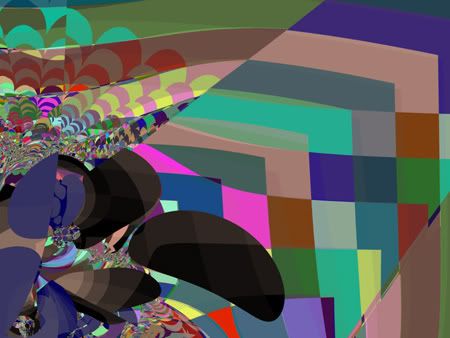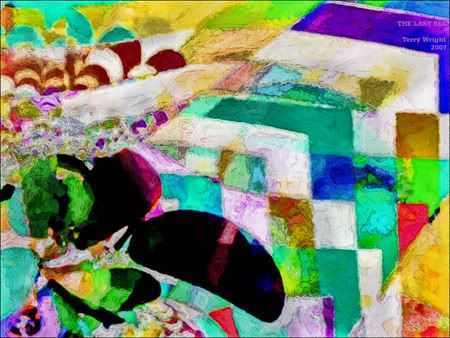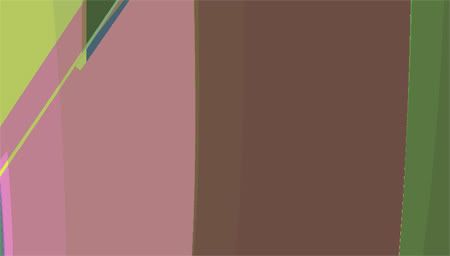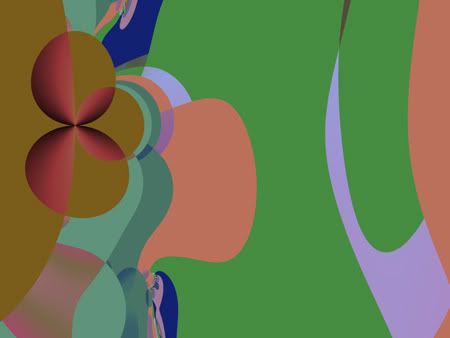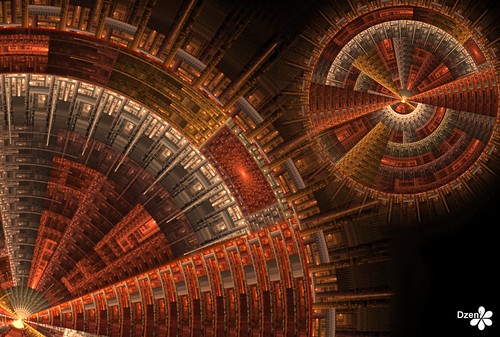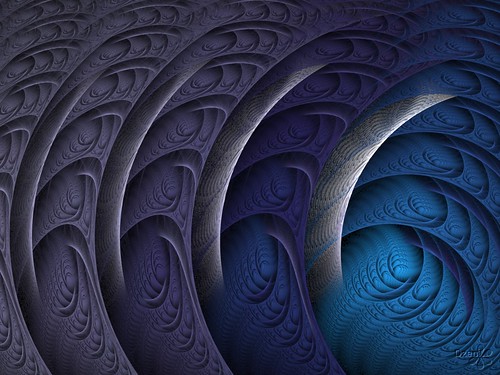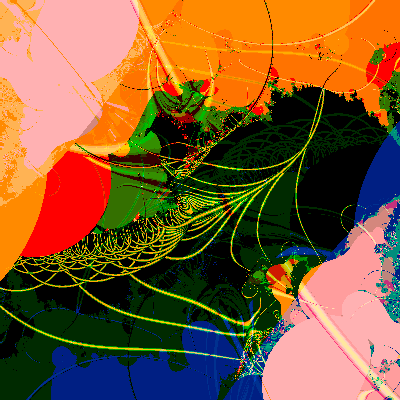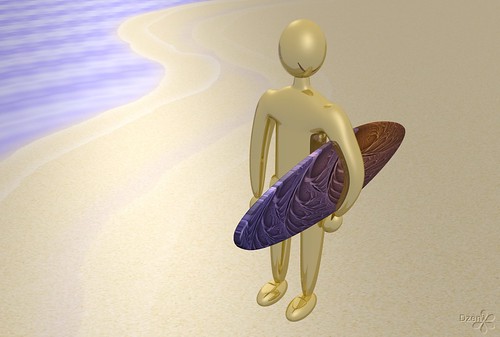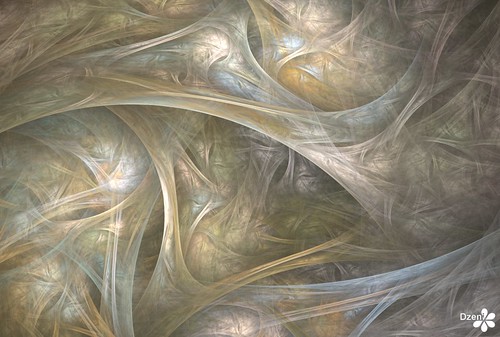The Myth of the Post-Processing Bias
I was going to merely add a comment to Terry’s earlier message, but I decided instead to write a more detailed response. Terry still feels that people are biased against post-processed fractals. Well, Terry is entitled to his opinion, and this is a blog, a venue for airing opinions, so now I’m going to air mine.
Who cares what Ken Keller thinks? I mean, okay, he’s got his definition of fractal art. It’s his opinion. But look at the date on the referenced piece: December 2003. Hmmm. I think this is old news. Ken references Charles Vassallo’s “Mandelbrot fractals and pretty girls” page; although there’s no date on that page specifically, the text suggests it’s from 1998. Even older news. And Terry trots out some suggestions from the 1999 Fractal Art Contest. 1999. Come on, Terry. Quit pulling the corpse out of the ground. Let it rest in peace.
What you’re seeing is not bias against post-processing. You’re seeing the difference between a technical and practical definition of fractal art. So let me back up for a second, and talk about fractal art and digital art and where post-processing fits in with all of that.
Terry is completely on the mark that all fractal images are “post-processed” in some fashion. We color them, or we layer them. Even if we choose “not” to color them, we are in fact making a choice (for black and white) because those reflect a property of the mathematics. Everything we do in creating fractal imagery is interpretation, a visualization of massive amounts of numbers, distilled into a form that we can make sense of quickly. So to say some algorithms for doing this are acceptable while others are not is rather pointless. To even suggest that some software can be used while other software cannot is also pointless; I can code almost anything in Ultra Fractal, so the choice not to use Photoshop is really just a personal preference and not one dictated by the art. I have my reasons for the preference, but they have little to do with artistic choices.
(Sidebar: people have written flame generators, L-systems, raytracers, font renderers, image importers, convolution filters, heightfield generators and more for Ultra Fractal. Some of these are easy, and some are hard. I have personally written formulas to do layered images in FractInt; the only limitation I encountered there was an arbitrary cap on the complexity of formula allowed, a limitation that can easily be removed, so FractInt too can do this stuff if you're persistent enough. Different tools are better for different things, but in reality choosing a “fractal” tool imposes very few limitations. There is no real difference between doing something entirely in UF and doing the same thing with Fractal Explorer + Photoshop, or any other combination that you like.)
So really, who gets to decide what is and is not fractal art? Ken Keller’s got his definition. Kerry Mitchell has his. We will each have our own definition, and there's no guarantee that they will be similar.
We can likely agree that fractal art is included within the larger category of digital art. After all, fractal art would not exist in its current form without the aid of computers to do the tedious mathematical grunt work. And since the product is a digital image, this makes sense. But what is the difference between fractal art (specific) and digital art (general)? What makes a piece of art fractal? To answer this question I will consider another, easily-recognizable type of digital art: 3D art.
3D art (for lack of a better label) is easily found on sites like Renderosity or 3D Commune. But there’s no rigid definition for it. There are no specific software packages that are required, even though POV-Ray, Poser, Bryce, Terragen, and so forth are popular choices. There is no specific subject matter that is required, although landscapes, spaceships, and… umm… fantasy women seem to be popular themes. You might even try for a more formal definition: 3D art is art where mathematical models of objects and light are used to simulate what an eye might see, with varying levels of realism… but if you used such a definition, you are judging based on the precise details of how an image is created, and that is information you may not have. If you do have it, it may be only because the artist gave it to you.
But this is like having to ask whether a particular painting is oil or acrylic or watercolor. Does it matter? Is Bert Monroy a photographer or a painter? He’s a painter, but if you only saw his work, without any explanation, I think I’d forgive you for assuming he was a photographer. Similarly, if you saw Terry’s work without description, I think I’d forgive you for assuming he’s a digital artist (general) rather than a fractal artist (specific) because a lot of what he creates doesn't seem to have the same characteristics as a lot of other fractal art. That’s not right or wrong, that’s Terry’s style. If Terry hadn’t told you he’s a fractal artist, you might not know. And you probably wouldn’t care. What matters is whether you like his art, or not.
So what does it mean to be a fractal artist? The definition of using a particular piece of software is clearly out; not only is our fractal software now powerful enough to do almost anything, but new fractal artists often pop up with custom software that they never share. We can use a technical definition: art created based on images that are the result of iterative formulas processed through visualization algorithms. Whew, what a load of gobbledegook. That would include pretty much any form of processing, even processing that made the “original” shape unrecognizable. (And I quote “original” because there is no original image without some form of interpretive algorithm, therefore all such algorithms are fair game.)
Of course, just because an image is fractal art does not mean it has a high fractal content. And this has little to do with the visualization algorithms selected, and far more to do with the aesthetic judgments of the artist. I have created images with very little fractal content. Are they fractal art? Sure! Would anyone familiar with “fractal art” recognize them as such? Probably not!
Here is the disconnect, then: a formal definition of fractal art is all about the process used to create the image and the underlying mechanisms. A perceptual definition—the kind of working definition most people will use—is based on whether the image “looks” fractal to them. The gap between these two is where the argument lies. There is plenty of fractal art that doesn’t look fractal. It tends to get labeled as more generic “digital art.” For now, let's call it “arguably fractal art.”
Most of the time, this is an unimportant difference. But some of the cases Terry cites—contests being a prime example—would cause arguably fractal art to be rejected. I can’t speak for anyone else’s contest, since I don’t run them, but I can address the 1999 text Terry quoted and the 2006 and 2007 contests. For 1999, voting was open to the public; the suggestion was just that—a suggestion—that images not obviously fractal might not appeal to those primarily interested in a fractal art contest. Similarly in 2006 and 2007, we are selecting artwork for a fractal art exhibition. Artwork that appears less fractal is at a bit of a disadvantage, because we are specifically trying to show artwork with more obvious fractal characteristics. Disadvantage does not mean impossible, however, and for 2006 we in fact selected a barely-fractal image. Iñigo produced this image with popcorn-like formulas, so from a technical standpoint it definitely belongs, but visually it lacks the fractal characteristics of the other winning selections.
So while technically, artwork may be fractal in nature, practically speaking others might not label it as such if you don’t tell them. It’s all about knowing the audience you’re marketing your work to. If your customer is looking for a washing machine, you don’t sell them oranges. You don’t even sell them a microwave. You sell them a washing machine. Any “community” site has an audience they are trying to attract. A calendar publisher has an audience they’re trying to entice. An exhibition organizer has a goal in mind for their exhibition. If those goals do not include technically-fractal-but-not-visually-fractal imagery, it’s not necessarily because they hate post-processing (because that’s a distinction that is meaningless). It’s far more likely that it’s because they’re using a visual, practical definition of fractal art.
Some of you may assume that I’m picking on Terry here. I’m not; I recognize that every artist has to have their own style. I’m just trying to show that there’s a practical side to this that explains the perceived “bias.” It’s 2007, not 1999. Fractal art is still undergoing rapid change. By 2015 we will laugh at how crude and unsophisticated our images from today are. It’s hard for me to look at my old artwork and not cringe at how raw it is. But all of these voices saying “you must do this or that…” ignore them. Follow your own muse.

